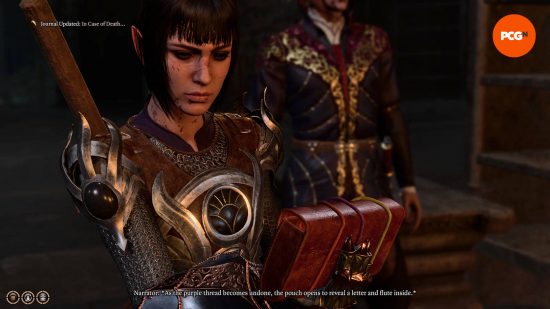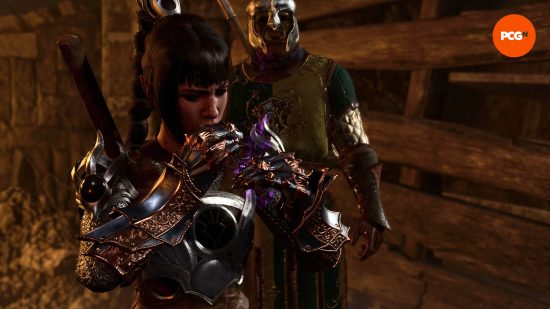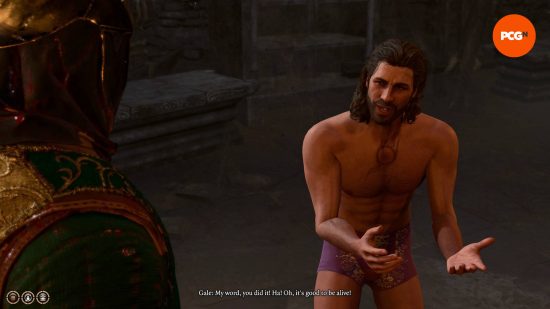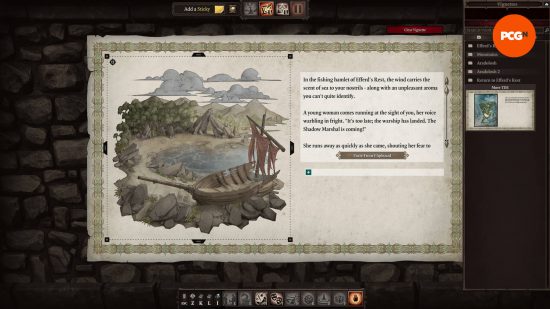Baldur’s Gate 3 is full of surprises. Whether it’s a misconception of a potential ally or another companion showing a different side of themselves in a tender exchange, every moment feels earned. Larian is a master at telling stories, and as such there are many lessons for tabletop GMs buried within BG3’s complex interpretation of Dungeons and Dragons’ fifth-edition mechanics.
I have decent experience as a tabletop DnD player. I spent a year of my life playing as a half-orc paladin who would adopt every orphaned child without fail. I was an elephant wizard looking for a “spoony bard” in a Final Fantasy-inspired universe. I’ve even sat at the other side of the table and watched in horror as the party blew up a pub full of devoted patrons. For me, RPG sessions are collaborative storytelling exercises housing the potential to create some unique and special memories, and Baldur’s Gate 3 is no different.
However, the death of a character is always something I have a hard time with. As a GM, I want the players to feel that it was their time rather than something that comes out of the blue. As a player, it’s something I’d like to avoid. In the past, death was always something so binary. You’re either alive or dead. Some experienced GMs found a way to subvert that, such as my elephant character turning into stone and being placed back on a fae creature’s shelf of collectible trinkets. Even then, it was the finality of it that felt inevitable. Sometimes, such as in more comedic RPGs like Paranoia, death is played for laughs, and while you could come back as a clone, it’s not exactly the same.
With all that said, upon playing my first campaign in Baldur’s Gate 3, I had the worst luck in experiencing my first party member’s demise. This came at the hands of a particularly angry mage, who was tending to her books as I attacked the goblin base to rid the marauding hordes of their leaders. Like a strict librarian, the mage – who it turns out is none other than Minthara – annihilated one of my party members with a lucky critical hit roll.
That character was Gale, the wizard whom I first met by dragging him through a strange portal of his own making shortly after plummeting from the Nautiloid. I didn’t think much of his inclusion in the party other than the fact I needed an offensive magic user on the team. So imagine my surprise when, after avenging him by curb-stomping the meddling mage with the rest of my party, an apparition appears before me.
In a somewhat awkward exchange, it turns out that Gale has prepared a ritual for you to enact to restore his life in the event of his death. He also emphasizes the fact that if he isn’t resurrected within two days, something catastrophic will happen. As it turns out, he’s telling the truth.
Of course, you can choose to ignore the ritual and cast other resurrecting magic, but having a process that acts like a Get Out of Jail Free card in Monopoly is rather inspired and only adds to the mystery of Gale as a character. How did he come to be this way? As a GM, I found this entire sequence fascinating. Suddenly, death need not be the end of life but the beginning of a puzzle and yet another layer of storytelling.
This unorthodox sequence of events reminds me of meeting Larian CEO Swen Vincke during a press trip for the studio’s previous game, Divinity: Original Sin 2. There, we were introduced to the tabletop RPG mode, where GMs can use the Divinity engine to run their own games. To demonstrate this in action, Swen, who was running the session as our GM, used a tweaked version of the DnD adventure Lost Mine of Phandelver. Our party was tasked initially with navigating a caravan through a goblin blockade to the next town, where we would get more quests.
Now, we could have opted to fight the goblins, and I’m pretty sure that was the intended route to allow us to see combat early on. However, there was a poll that came up with four options, and one of them was left for improvisation. As a Chaotic Good Cleric, I came up with the idea to persuade the goblins that the cargo in our caravan was, in fact, plague-ridden corpses that we were delivering to the next town over for burning. Raised eyebrows came from all sides, especially Swen, who wondered where I was going with this. But sure enough, after a critical success roll and a bit of dry heaving acting from Swen as the goblins were revolted by the prospect of “tainted meat,” we agreed to help the goblins move the blockade to let us pass, then set it back up afterward.
This is one of my core memories of something so bewildering and bizarre in an RPG that as soon as Gale uttered the words, “if you see this manifestation, that means I have prematurely perished,” it brought back fond memories of the day I flummoxed Swen Vincke with goblin diplomacy. If Swen is reading this, I have no idea if you had a hand in this, but I strongly suspect you did. If so, congratulations, you got me.




